“The most fashionable, scrutinised and controversial queen in history”, as curator Sarah Grant calls Marie Antoinette of France, now has a show at the Victoria and Albert (V&A) Museum. You may remember Tiktoks and Instagram reels from a few weeks ago of guests sporting white wigs and powdered faces, dripping with jewels and carrying painted hand fans at the London museum. Yes, it’s fun, but more than showcasing excess, Marie Antoinette Style, the first major U.K. survey devoted to the 18th century French queen, endeavours, through over 250 objects spanning dress, jewellery, scent, interiors and film, to explain how style became crown, shield and trap all at once.

Portrait de Marie-Antoinette à la rose by French painter Élisabeth-Louise Vigée Le Brun
| Photo Credit:
Courtesy Château de Versailles, Dist. Grand Palais RMN Christophe Fouin
From the moment you enter Galleries 38 and 39, the tone is set: this is an immersive experience, a walk through a queen’s identity. The first section outlines Antoinette’s arrival in France as a 14-year-old Austrian archduchess in 1770, her marriage to Louis XVI, and her gradual rise as an arbiter of taste in the French court. Grant notes that while Antoinette “is still seen as a by-word for excess and frivolity, it is a trope based on mythology”. The exhibition’s aim is to reposition her not as a caricature, but as a woman who shaped the culture of her age and whose style continues to reverberate.
Marie Antoinette Style at the V&A
| Photo Credit:
Peter Kelleher
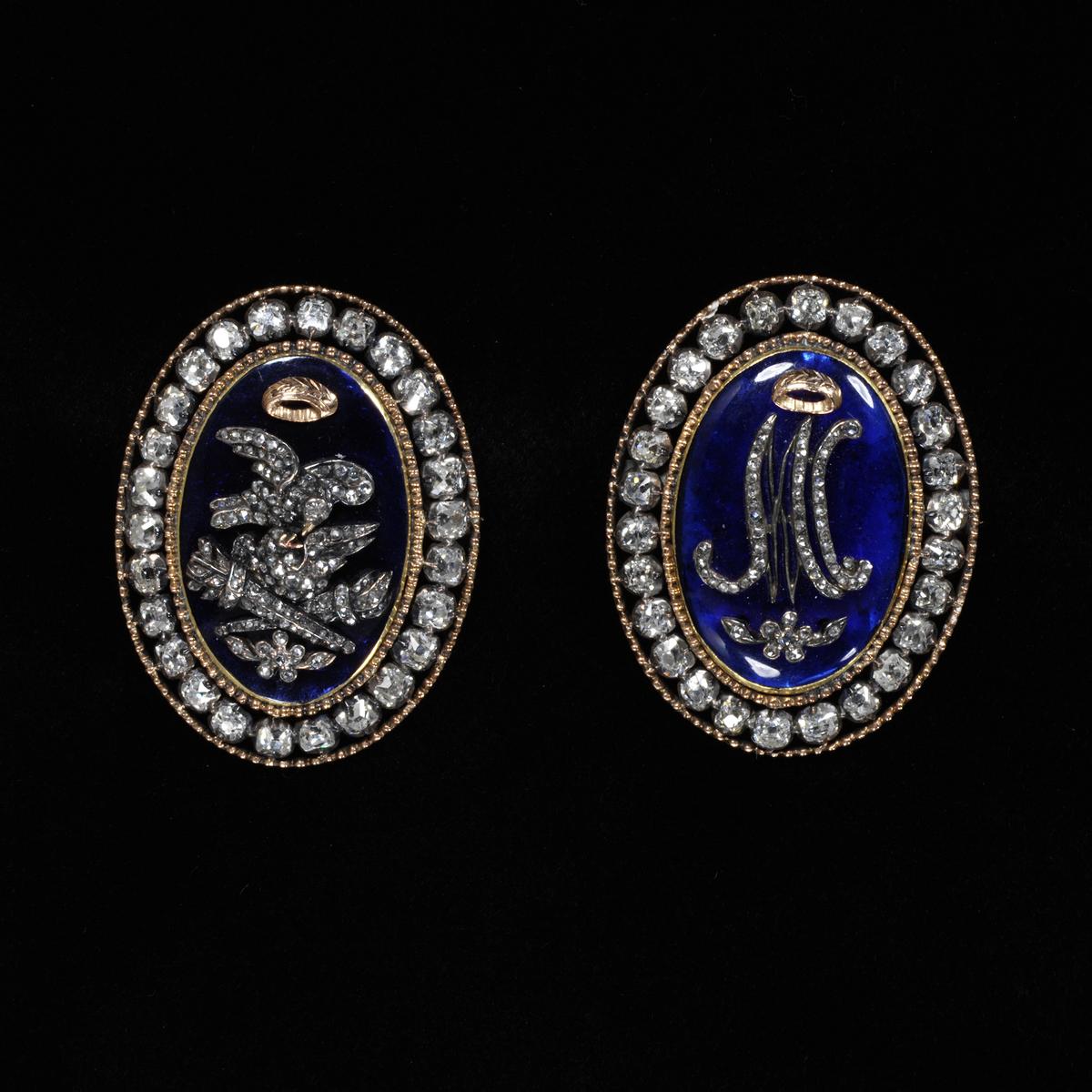
A pair of braided bracelet clasps; gold with brilliant-cut diamonds with central plaques of blue paste, one with the initials of Marie Antoinette, and the other with turtle doves and hymeneal torches. (Paris, 1770)
| Photo Credit:
Dominic Naish
“Marie Antoinette is someone who has never gone away as a famous figure,” explains Patricia Mears, deputy director of The Museum at New York’s Fashion Institute of Technology. From the time she crossed that border into France, she became almost an inanimate object, subject to abuse. “People made fun of her colouring, because she was blonde — but not really blonde-blonde, more of a strawberry or redhead. They looked down on her Germanic culture and background. It was extraordinary how they bashed her terribly. And ironically, she surfaced and rose above that, through this idealised environment that she created,” she explains.
It’s this environment that has found a stronghold throughout culture today, and is at the heart of the exhibition. The display of garments and accessories is sumptuous. Visitors encounter court dresses of silk and brocade, a slipper of beaded pink silk, fragments of original textiles that survived the passage of war and revolution. In a high-profile loan from the Château de Versailles sits a rivière of diamonds once linked to the infamous Affair of the Diamond Necklace (when swindlers tricked a cardinal to obtain the necklace under the pretence of finding favour with the queen).
A replica of the necklace from the Affair of the Diamond Necklace
| Photo Credit:
Peter Kelleher
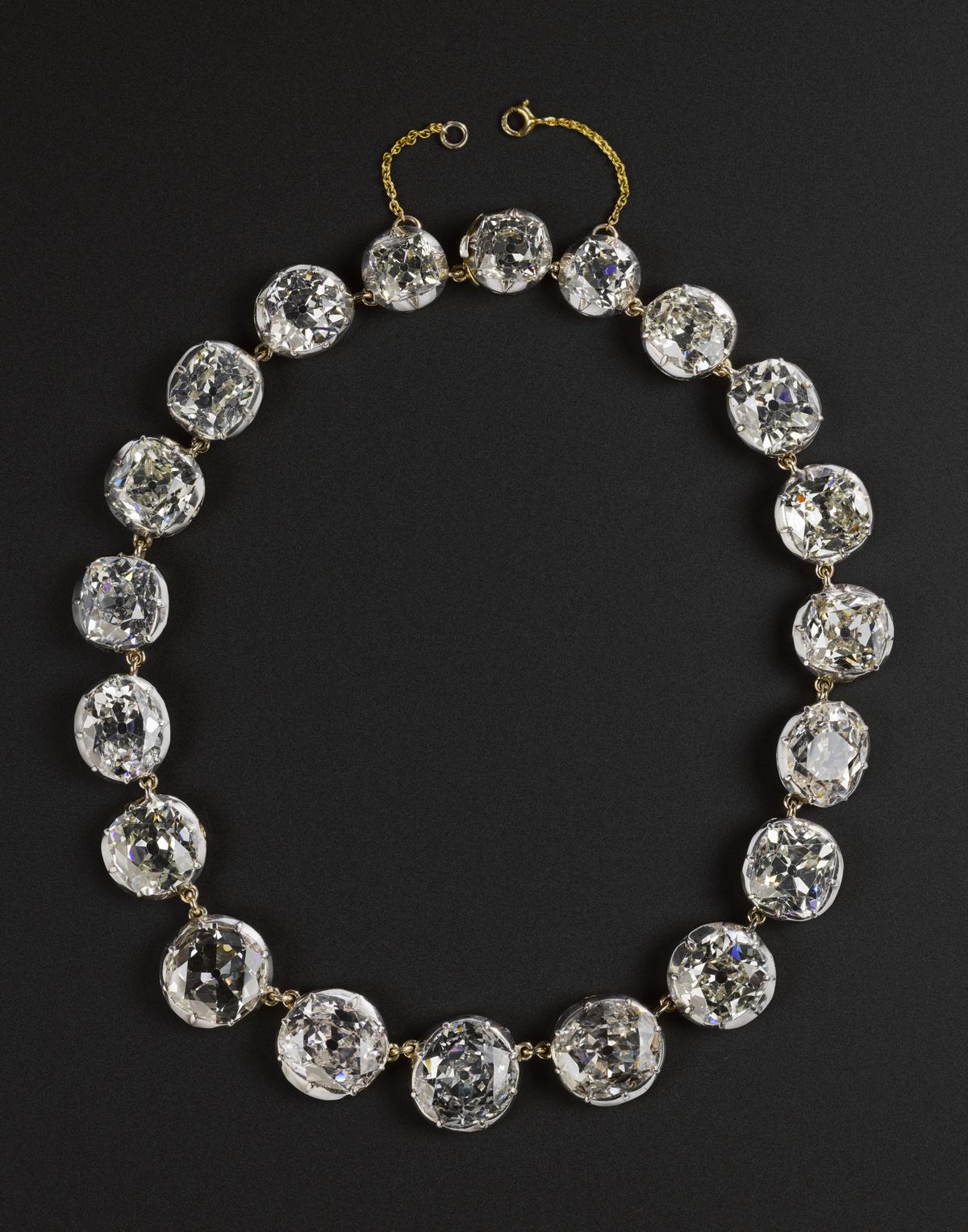
The Sutherland Diamonds, also linked to the Affair of the Diamond Necklace
| Photo Credit:
Kira Zumkley
V&A’s royal four
The narrative of the objects at the exhibition is structured chronologically in four acts, traversing Antoinette’s early embrace of luxury; her reinvention in the 1780s amid the fashion of Anglomania (an excessive interest in all things English) and pastoral fantasy; the dawn of the French revolution; and finally her legacy in the centuries that followed.
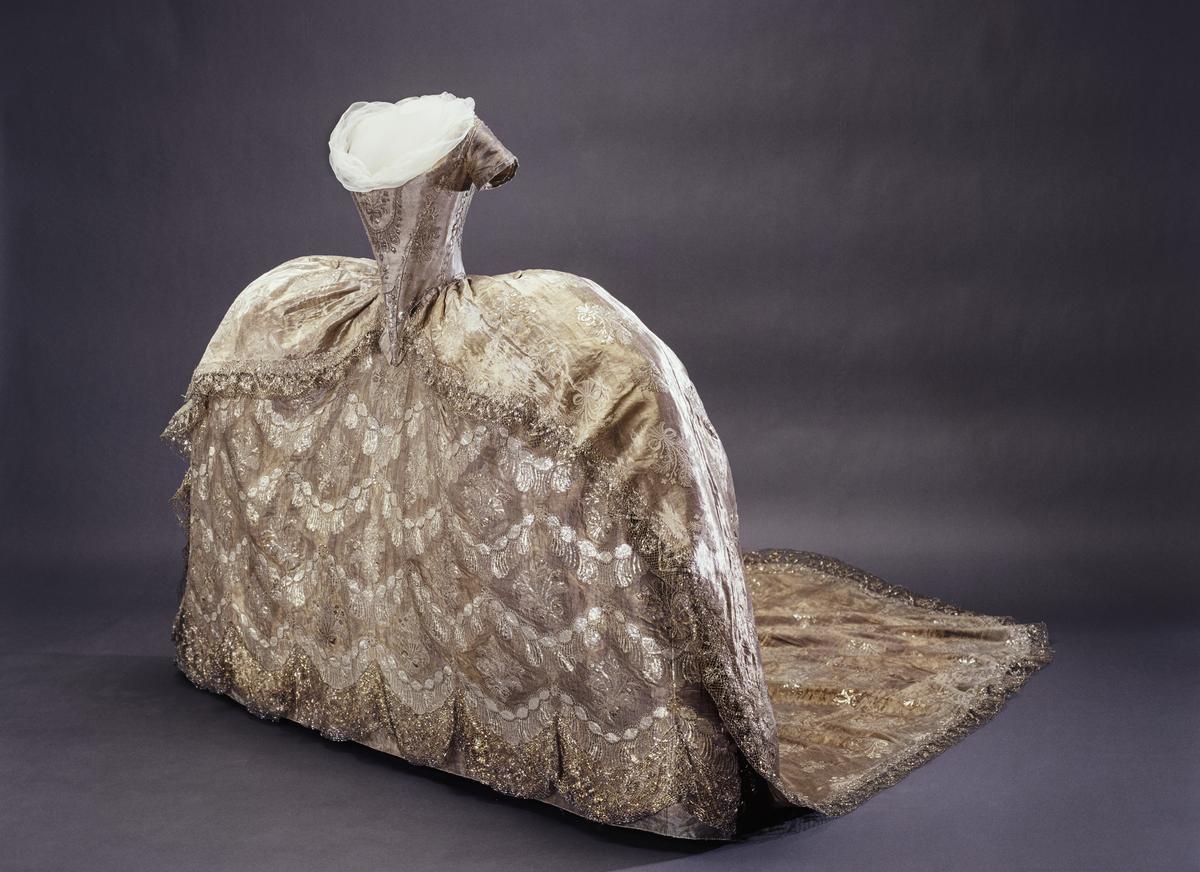
The wedding gown of Duchess Hedvig Elisabeth Charlotta (later Queen of Sweden)
| Photo Credit:
Courtesy Göran Schmidt Livrustkammaren, SHM
Manolo Blahnik’s sketches and custom shoes created for Sofia Coppola’s film Marie Antoinette.
| Photo Credit:
Peter Kelleher
Scent lessons from Antoinette
In the middle section of the exhibition comes one of its most striking interventions: fragrance. As Grant explains: “From the very beginning, scent was hugely important to Antoinette. Her interiors were scented and all her fashion accessories.” The museum commissioned four distinct olfactory installations: the first evokes youthful floral triumphs; the second, the powdered salons of Versailles; the third, the pastoral gardens of the Petit Trianon; and the final one, the stark, damp cell of the Conciergerie where she awaited execution. This sensory dimension underscores that among Antoinette’s many tools was the embodied self: not simply how one looked but how one was experienced.
The four distinct scents that draw you into Antoinette’s world
| Photo Credit:
Peter Kelleher
That self-fashioning was central to her survival in a hostile court. Mears reminds us that Antoinette was “the subject of a lot of negative propaganda”. The show displays caricatures that depict her as a milkmaid dancing as France starves, and yet, “she asserted herself where she could… using what she could”. Dressing, decorating, patronising luxury trades — all these became strategies of visibility and influence in a world where formal power was denied to her.

A 1791 caricature showing Marie Antoinette as a harpy tearing up the Constitution
| Photo Credit:
Courtesy CC0 Paris Musées, Musée Carnavalet – Histoire de Paris
Pastel palettes and soft power
From that point, the exhibition widens the lens. In a court defined by hierarchy and surveillance, Antoinette mastered not only what she wore but the environments she occupied. Interiors were used as infrastructure to showcase a kind of soft power, says Grant. “Her role was one of soft power, supporting the French luxury trades and industries. She was incredibly active and influential when one considers the restrictive conventions within which she had to operate.”
The exhibition draws out how this ideology of soft power manifested in colour, silhouette and material. Pastel palettes softened the visual temperature of rooms once dominated by red and gold; diaphanous white muslins and imported Indian cottons signalled a desire for naturalism and freedom of movement; florals and ribbons celebrated a gently theatrical femininity. Mears notes that these were “softer, closer to nature” and that Christian Dior’s favourite couture grey was rooted in the 18th-century tones of Antoinette’s interiors.
Marie Antoinette Style
| Photo Credit:
Peter Kelleher
Marie Antoinette’s hairstyles and fans
| Photo Credit:
Peter Kelleher
Power of objects
Antoinette had a stronghold on interiors, including cutlery, chairs, a whole gamut of experience — as seen in the exhibition, from room to room. There is a reason modern interiors continue to borrow from this “ceaseless century”, Mears says. It was under Antoinette’s patronage that the body became central to craft. For instance, the perfect chair, the side table to lay down your things. Comfort became a central, and radical, point of view in Antoinette’s world. However, objects outlast upheaval, but they can also attract it. The recent high-profile heist of historic jewels at the Louvre — French treasures once linked to monarchy now lifted in a cinematic raid — shows our polarised relationship with the excesses of the past.

Marie-Antoinette’s armchair of carved walnut, with the monogram MA in the cresting (Paris, late 1780s)
| Photo Credit:
Jaron James
A chameleon queen
In the exhibition’s portraits, as visitors meander through its rooms, Antoinette’s chameleonic capability becomes a quiet revelation. She is never one thing for long. As Mears puts it, her power lay in “being able to transform oneself in multiple ways”. You see her dazzling in jewels to “outshine” court rivals; next, in a tailored riding habit derived from menswear; and then in a pastoral chemise, “dressing up as a little milkmaid” in her escape theatre at the Petit Trianon (for entertainment away from the main palace). All were roles deployed with precision.
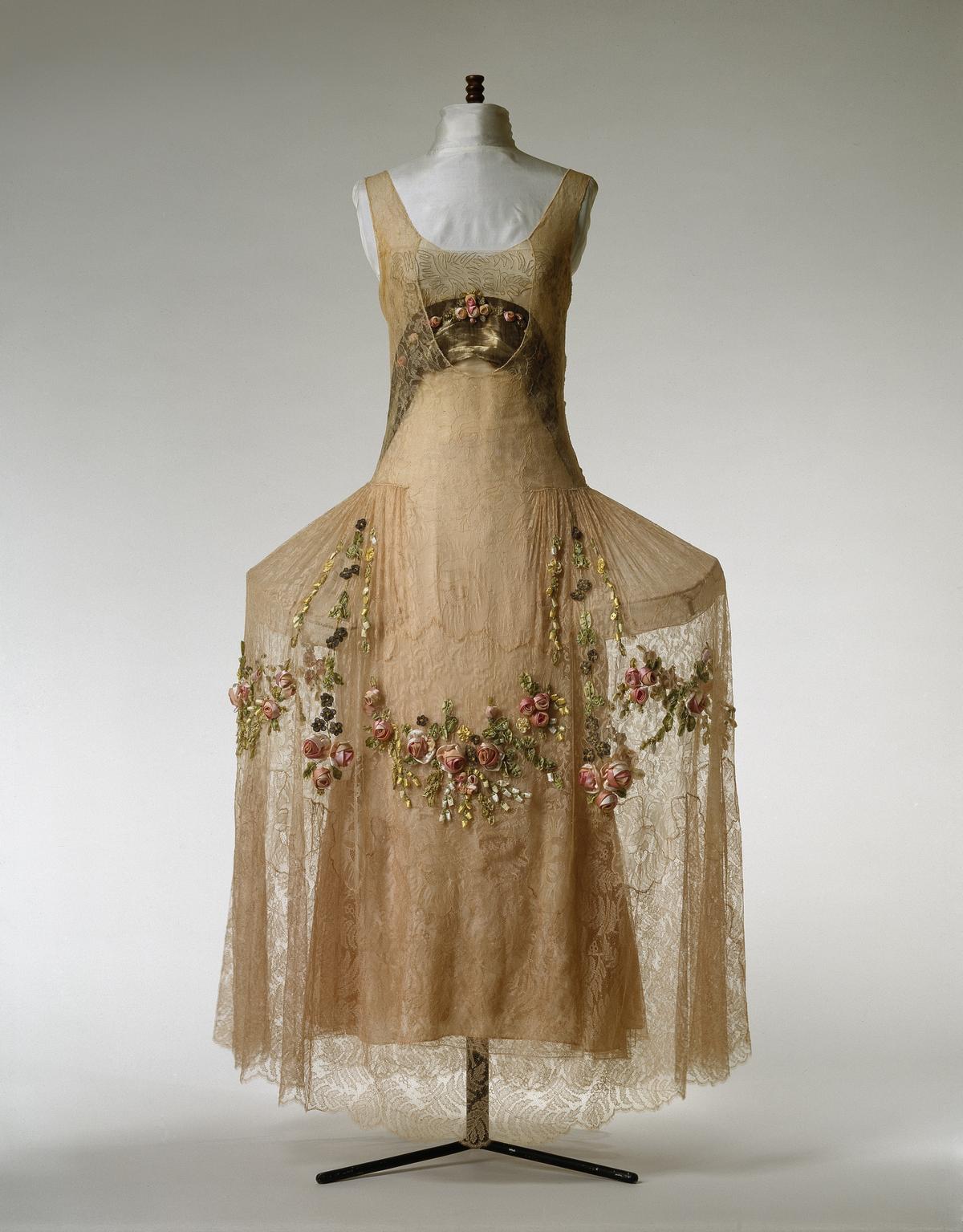
Boué Soeurs (Sylvie and Jeanne Boué) robe de style
| Photo Credit:
Courtesy Designmuseum Denmark

Antoinette’s beaded silk slippers
| Photo Credit:
Courtesy Musée Carnavalet / Roger-Viollet
Interestingly, today, that visual vocabulary continues to seduce. Filmmaker Sofia Coppola showcased the extent of the Marie Antoinette aesthetic in an eponymous modern-day cult film starring Kirsten Dunst as the French queen in 2006. There were Manolo Blahnik shoes, ‘let them eat cake’ moments, silks and chiffons.
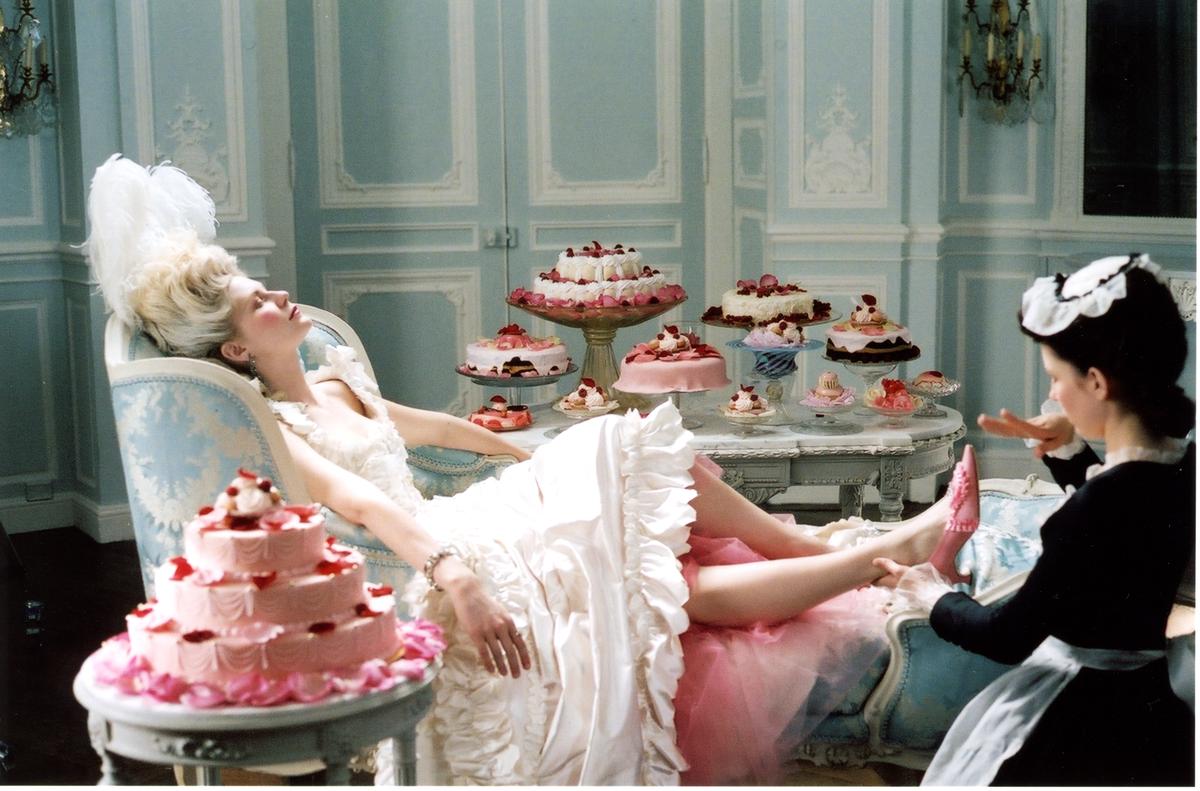
Kirsten Dunst in a film still from Sofia Coppola’s Marie Antoinette
| Photo Credit:
courtesy of I WANT CANDY LLC. and Zoetrope Corp
Kate Moss in an Antoinette-inspired creation by Sarah Burton for McQueen
Grant lists the revived fascination across fashion and culture for Antoinette’s aesthetic, which can be summed up as sweet, feminine, close-to-nature. Throughout fashion history, that look has been appreciated and accentuated — from Valentino couture, to Vivienne Westwood brides dressed in panniers, and even Miley Cyrus channelling Versailles on stage. “Her legacy is so strong and her influence is so broad that it adapts itself to the current climate,” she explains.
An outfit from Andrea Grossi’s ‘Welcome to DeusLand’ collection
| Photo Credit:
Courtesy Andrea Grossi
Moschino autumn/winter 2020 at the Milan Fashion Week
| Photo Credit:
Courtesy Pixel Formula, SIPA
Building of taste
Antoinette used culture to reach people of influence. She was “by some distance the most musical French queen in history”, collaborating with composers Mozart and Gluck; she cultivated a refined and distinctive aesthetic that fused nature with stagecraft in theatres. These were her diplomatic tools: the building of taste, the elevation of artisanship, the shaping of how modern Europe would come to understand pleasure, beauty and the domestic sphere.
Out of step with today?
But if bows, corsetry and satin feel wildly out of step with a world in crisis — as seen across the latest Paris Fashion Week’s extravagant silhouettes courtesy Saint Laurent and more — Mears offers some context. She says that when style loses direction and becomes cacophonous (think social media hype or sameness), people look to eras of refinement. “People who are looking for true beauty, refined aesthetics, go back to a period that did it that way,” she says. In doing so, ultra-femininity becomes not regression, but “self-power… as a way to fight back”. Flounce, fluff, softer palettes become a kind of purity of taste.
The exhibition’s final room filled with contemporary fashion inspired by Marie Antoinette
| Photo Credit:
Peter Kelleher
As you reach the end of the show, while there is the dress she wore to her execution, it doesn’t conclude with the guillotine. One emerges understanding that Antoinette’s visual language has never been erased, only continually reinterpreted. Ballet’s romantic revival, cottage-core fantasy, the return of bows and bijoux in luxury fashion — all sit within a lineage she helped ignite. And it was interesting getting to know “Madame Déficit” in a new light.
‘Marie Antoinette Style’ is at the V&A till March 22, 2026.
The writer is an independent journalist based in London, writing on fashion, luxury and lifestyle.

